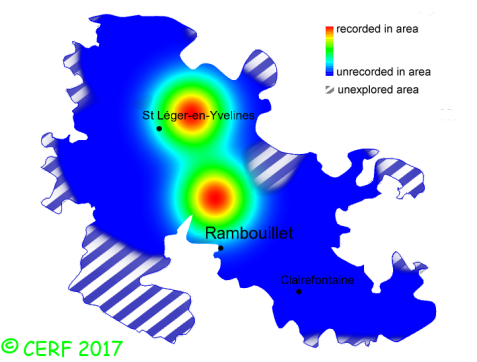| Hypholoma subericaeum (Fr.) Kühner |
|
|
|
|
|
|
The cap is yellowish-ochre to brownish orange-red, with a central umbo; its margin is striate when damp with age. The cap surface is smooth, lubricated. The stem is white to honey yellow, without ring, with a cortina. The flesh is white in the cap, ochre in the stem, unchanging; its taste is mild; the odour is faint, of grass or mould; its texture is fibrous. The gills are yellowish grey then purple brown, with white edge, adnate, distant (nb of gills per 90° ~ 11 ). The spore print is dark brown. This species is saprophytic. It grows on the ground, in damp coniferous woods, swamps, ditches. The fruiting period takes place from September to November.
Distinctive features : conical or umbonate cap when mature, red brown to tawny ochre coloured, getting paler when drying without veil remains and striate when old; lilac-grey gills; yellow-white stem, browner towards base; in very wet areas Hypholoma subericaeum is rare and confined in the forest of Rambouillet, and is quite rare, more generally speaking . | ||
|
page updated on 14/01/18

